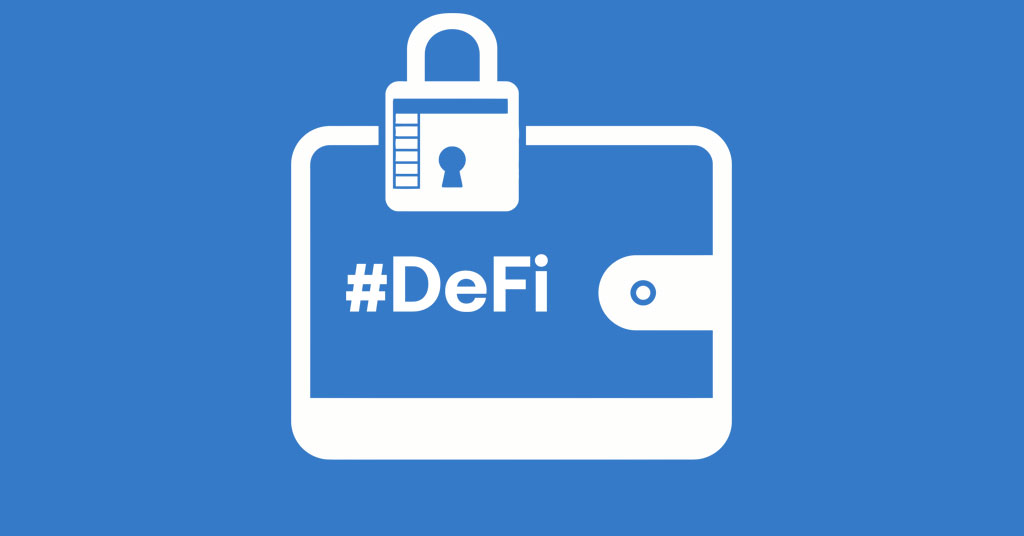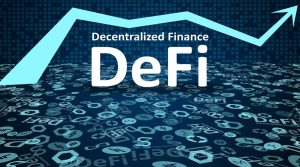Introduction
In the world of decentralized finance (DeFi), token standards play a crucial role in defining the functionality and interoperability of digital assets. These standards provide a common set of rules and specifications for developers to create and manage tokens on various blockchain networks. In this article, we will explore the different token standards used in DeFi and delve into the security considerations that must be taken into account to protect user funds and maintain the integrity of decentralized platforms.
Overview of ERC-20 Standard
One of the most widely adopted token standards in the DeFi ecosystem is the ERC-20 standard. ERC-20, short for Ethereum Request for Comment 20, defines a set of rules that all tokens on the Ethereum blockchain should adhere to. It enables the seamless creation and exchange of fungible tokens, which are identical and interchangeable with each other. The ERC-20 standard has fueled the growth of countless decentralized applications (dApps) and has become the backbone of many DeFi protocols.
Advantages and Limitations of ERC-20
While ERC-20 has brought numerous advantages to the DeFi space, it also has its limitations. On the positive side, ERC-20 tokens are highly compatible, allowing for easy integration with wallets, exchanges, and other dApps. They have become the preferred choice for crowdfunding through Initial Coin Offerings (ICOs) and Initial Exchange Offerings (IEOs). However, the standard lacks built-in support for non-fungible tokens (NFTs) and more complex token functionalities, leading to the emergence of alternative token standards.
Understanding ERC-721 Standard
The ERC-721 standard addresses the limitations of ERC-20 by introducing the concept of non-fungible tokens. Unlike ERC-20 tokens, ERC-721 tokens are unique and indivisible. This uniqueness has unlocked a wide range of possibilities, including the representation of digital collectibles, virtual land ownership, and in-game assets. The ERC-721 standard has gained significant popularity, especially in the gaming and digital art sectors, where uniqueness and scarcity are highly valued.
Use Cases and Benefits of ERC-721
ERC-721 tokens have found various applications beyond the realms of gaming and art. They are being used for identity verification, supply chain management, and tokenizing real-world assets. The benefits of ERC-721 include increased token uniqueness, improved scarcity, and enhanced traceability. With ERC-721, developers can create tokens that represent distinct, one-of-a-kind assets, allowing for more diverse and innovative use cases in DeFi.
The Emergence of ERC-1155 Standard
Recognizing the need for both fungible and non-fungible tokens in the DeFi space, the ERC-1155 standard was introduced. ERC-1155 tokens can be both fungible and non-fungible, providing a more flexible and efficient solution. This standard allows developers to create multiple token types within a single smart contract, reducing the deployment costs and blockchain bloat associated with deploying separate contracts for each token. ERC-1155 has gained traction dueto its versatility and potential for cost savings.
Benefits and Versatility of ERC-1155
ERC-1155 brings several benefits to DeFi applications. It enables the creation of hybrid token models, where assets can have both fungible and non-fungible properties. This versatility opens up new possibilities for gaming, tokenized assets, and even fractional ownership. With ERC-1155, developers can build complex economies and interactive ecosystems while optimizing gas costs and minimizing blockchain congestion.
Security Considerations in Token Standards

When it comes to DeFi, security is of paramount importance. The decentralized nature of blockchain introduces new challenges that must be addressed to protect user funds and maintain trust in the ecosystem. Auditing smart contracts is a crucial step in ensuring their security. Thoroughly reviewing the code and conducting security audits by independent experts help identify vulnerabilities and prevent potential exploits.
- Auditing Smart Contracts
Auditing smart contracts involves analyzing the code for potential security risks and vulnerabilities. Experienced auditors review the codebase, assess the logic flow, and verify the adherence to best practices. They identify potential attack vectors, such as reentrancy attacks, unchecked external calls, and integer overflows. Auditing smart contracts before deployment reduces the likelihood of critical vulnerabilities that could compromise the security of the entire system.
- Avoiding Common Security Risks
Developers must be aware of common security risks and employ best practices to mitigate them. Secure coding practices, such as input validation, access control, and proper error handling, help prevent common attack vectors. Using well-established libraries and frameworks, ensuring the authenticity of dependencies, and following up-to-date security guidelines are essential steps in building secure DeFi applications.
- Importance of Security Tokens
Security tokens, also known as investment tokens or asset-backed tokens, are gaining prominence in the DeFi space. These tokens represent ownership in a real-world asset, such as real estate, company shares, or commodities. The regulatory compliance and security measures associated with security tokens make them attractive to traditional investors seeking exposure to blockchain-based assets. Security tokens offer fractional ownership, increased liquidity, and the potential for automation through smart contracts.
- Ensuring Security in DeFi Platforms
DeFi platforms must prioritize security to protect user funds and maintain trust. Implementing robust security measures, including multi-factor authentication, secure key storage, and regular security audits, helps mitigate the risk of unauthorized access and fund loss. Integrating insurance mechanisms and utilizing decentralized governance models further enhance security and provide recourse in case of unexpected events.
Compliance and Regulations
Compliance with regulatory requirements is crucial for the long-term sustainability of DeFi platforms. As the industry matures, governments and regulatory bodies are paying closer attention to the space. DeFi projects must proactively address compliance concerns and collaborate with regulatory authorities to ensure a healthy and secure environment for all participants. Establishing transparent policies, adhering to Know Your Customer (KYC) and Anti-Money Laundering (AML) regulations, and embracing regulatory frameworks promote wider adoption and legitimacy.
Integration of Token Standards in DeFi
Token standards are continuously evolving and being integrated into various DeFi applications. Developers are exploring ways to combine different token standards to create innovative financial products and services. Interoperability between token standards enables seamless value transfer between different platforms and ecosystems, fostering collaboration and expanding the possibilities of decentralized finance.
Integration of Token Standards in DeFi
As the DeFi ecosystem continues to expand, developers are finding innovative ways to integrate different token standards and unlock new possibilities. Interoperability between token standards allows for seamless value transfer and collaboration between different platforms and ecosystems. This integration enables the creation of complex financial products and services that leverage the strengths of various token standards.
By combining token standards such as ERC-20, ERC-721, and ERC-1155, developers can create hybrid models that offer unique functionalities. For example, a DeFi platform could utilize ERC-20 tokens for governance and utility purposes, while also incorporating ERC-721 tokens to represent digital collectibles or unique assets within the ecosystem. The versatility and interoperability of token standards empower developers to design sophisticated economic systems and engage users in novel ways.
Furthermore, the integration of token standards promotes liquidity across different platforms. Users can seamlessly transfer their assets between protocols, taking advantage of diverse opportunities and maximizing their returns. This interoperability reduces friction and eliminates the need for multiple token conversions, providing a seamless user experience in the decentralized finance landscape.
In addition to enhancing user experience and expanding functionality, the integration of token standards also fosters collaboration within the DeFi community. Developers and projects can leverage existing standards and protocols, building upon the work of others to create innovative solutions. This collaborative approach accelerates the pace of development, encourages knowledge sharing, and fosters the growth of the entire ecosystem.
However, it’s important to note that with the integration of different token standards comes the responsibility to ensure compatibility and address potential challenges. Developers must thoroughly understand the specifications and requirements of each token standard to ensure seamless integration. Compatibility issues and technical complexities need to be carefully considered and addressed during the development process.
Moreover, as the DeFi industry continues to evolve, new token standards may emerge to address specific use cases and requirements. Developers should stay updated with the latest developments and advancements in token standards to leverage the most suitable options for their projects.
In conclusion, the integration of token standards plays a crucial role in shaping the future of decentralized finance. It allows developers to combine the strengths of different standards, creating hybrid models that offer unique functionalities. Interoperability between token standards enables seamless value transfer, promotes liquidity, and fosters collaboration within the DeFi ecosystem. As the industry continues to innovate, developers must stay abreast of the evolving token standards landscape to build robust and versatile decentralized applications.
Conclusion
Token standards are the building blocks of the DeFi ecosystem, enabling the creation and management of digital assets on blockchain networks. Understanding the advantages and limitations of different token standards is crucial for developers and users alike. Moreover, prioritizing security considerations in DeFi platforms is essential to protect user funds and maintain trust in the decentralized finance space. As the industry evolves, token standards will continue to play a vital role in shaping the future of finance.
FAQs
Q1: Can different token standards be combined within the same smart contract? A1: Yes, developers can create smart contracts that incorporate multiple token standards, such as ERC-20, ERC-721, and ERC-1155, within the same contract.
Q2: What are the benefits of integrating token standards in DeFi platforms? A2: Integrating token standards allows for the creation of complex financial products, promotes liquidity, and fosters collaboration between different platforms and ecosystems.
Q3: Are there any challenges in integrating different token standards? A3: Yes, developers need to ensure compatibility and address technical complexities when integrating different token standards. Thorough understanding of each standard’s specifications is crucial.
Q4: How does the integration of token standards benefit users in DeFi? A4: The integration of token standards provides users with a seamless experience, allowing them to transfer assets between protocols and access diverse opportunities without the need for multiple token conversions.






